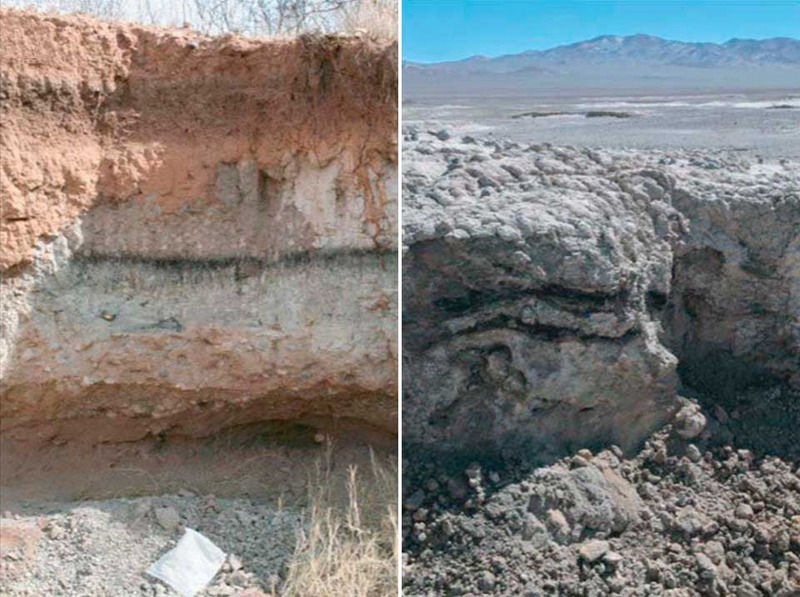
© Adapted from J. S. Pigati et al., PNAS Early Edition (2012)It's in there. The purported markers of an extraterrestrial impact found in a dark layer of sediment at Murray Springs, Arizona (left), also appear in similar yet older layers elsewhere, including Chile's Atacama Desert (right), suggesting the markers are actually formed on Earth by natural processes.
Did a comet wipe out woolly mammoths and an ancient Indian culture almost 13,000 years ago? Geologists have fiercely debated the topic since 2007. Now a new study says an extraterrestrial impact wasn't to blame, though the scientists who originally proposed the impact idea still aren't convinced.
Three unexplained phenomena happened on Earth around 12,900 years ago. An extended cold spell known as the Younger Dryas cooled the world for 1300 years. Large creatures such as mammoths, mastodons, and their predators went extinct. And the Clovis culture - a group defined by the distinctive stone and bone tools that they manufactured, and presumed by many archaeologists to be the first inhabitants of the New World - suddenly disappeared.
In 2007, a team of researchers tried to tie together these seemingly disparate events to a single cause: an extraterrestrial object, possibly a comet, exploded above eastern Canada, they speculated. Their claimed evidence, which has been
much disputed since it was first reported, included several types of "impact markers" sometimes found after an extraterrestrial object strikes Earth. These purported markers include unusual grains of a titanium-rich form of the mineral magnetite; tiny magnetic spherules; and elevated levels of iridium, a relatively rare element that's more common in extraterrestrial objects than in Earth's crust.
The researchers found all of these markers embedded within unusual layers of dark, organic-rich sediments that scientists often call "black mats." These strata are the remains of ancient marshes and swamps, and at many sites across North America, especially in the American Southwest, black mats began accumulating at the beginning of the Younger Dryas, the researchers noted. Many paleontologists have noted that black mats are often a sort of dividing line between older sediments containing fossils of ice-age megafauna, and younger sediments that don't. And many archaeologists have observed that black mats seem to mark the demise of the Clovis culture, because the distinctive spear points that they produced are common in sediments below the layers but nonexistent above.

